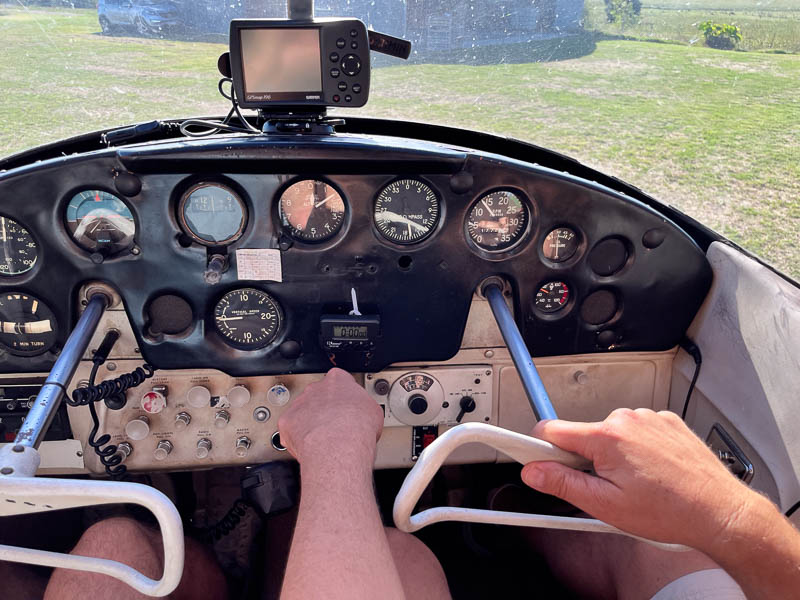A week later, N5581M is still in Villa Mercedes. My vacation is about to end, and I must pick her up and fly back to Uruguay. But how to get to VM? 12 hours by bus again? Luckily, Lucho knows a young pilot who needs to do some hour building and they agree to fly me.
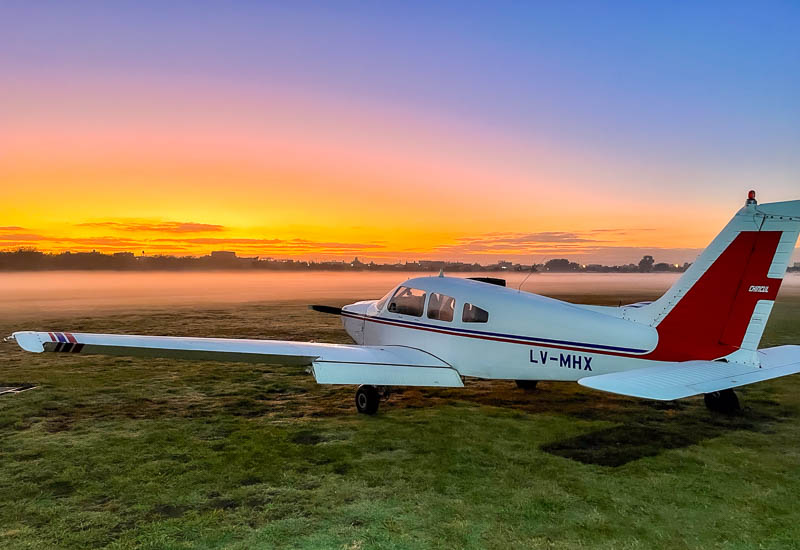
It is a peaceful Monday morning in Matanza. Shallow fog obscures the wet gras runway, creating a mystical background for the beautiful white Piper Archer. When I arrive at 6:30, the two pilots already finished pre-flight. They had done most of the preparation the previous evening. We take off at 7. It is chilly. I like it that way, after all the heat we endured in the last weeks. Of course, we have some hot Mate to warm us up. Four hours later, we arrive at VM.
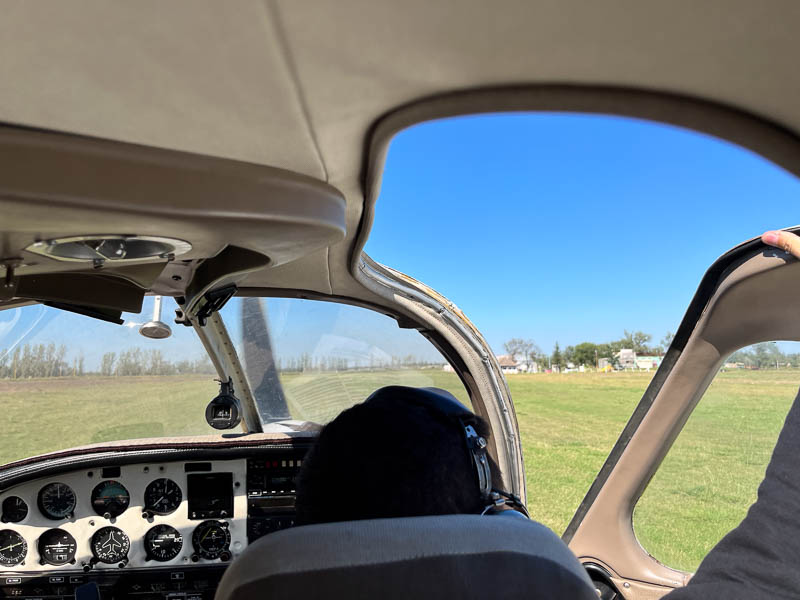
The moment we leave the Piper, journalists follow me, as if I were some kind of superstar. They are not interested in the pilots who just landed, they want to interview me, the strange German passenger.
Now, I am typically indifferent towards publicity. I don’t search it, but I don’t avoid it either. This blog is for the enjoyment of other people, not to make me famous. The clubs in Argentina help me a lot and I hope I can pay them back one day. Maybe talking about the fascination of flying helps the clubs. Anyhow, my Spanish is awful, sorry for that:
I am in a hurry. Pre-flight and interview are quick, but the club won’t take my money for two weeks of hangarage and I can not accept this. We negociate. This community is incredible. Exchanging abrazos takes time too. No shaking hands in this country, I even kiss the bearded handyman. Engine starts smoothly and – yes –generator charges the battery. I think I can even hear the relays clatter properly.
I follow my flight plan. I had filed it before landing, while still sitting in the back seat of the Piper. First contact is with Reynolds Tower. Loud and clear, none of the ugly radio station background noise we have near Capital Federal. He asks me to report 45 nautical miles out, the border of his controlled airspace. There, he sends me to the next sector, but I have a hard time hearing them, so I just follow my flight plan. I am only scratching Rio Cuarto’s control area anyhow. I don’t fly back the way I came. My destination is not Matanza, but Rosario, 150 miles northwest of Buenos Aires, on the western bank of the Rio Parana. My plan is to land here, go through immigration and customs and continue to Uruguay’s Carmelo airport. A new route to Uruguay, as up to now I always used the international airports of San Fernando and Colonia for this purpose.
After two hours of radio silence, I approach Rosario and I hear – Heike! Her Spanish is much better than mine, but she speaks English, probably for the benefit of her German customer, flying her plane. I call Rosario in English too, two English speaking Germans, departing and arriving simultaneously at a lonely border airport in Argentine’s province of Santa Fe. On another frequency, we quickly exchange greetings and the latest news. Yes, Andreas, Carmelo is a good choice for border crossing, say hello to Henry. Thank you Heike, and have fun in Iguacu.
I land at Aeropuerto Internacional Rosario Islas Malvinas. Yes, I know, the Islas Malvinas are a huge thing for Argentina, but why call this airport Islas Malvinas. Isn’t this confusing?
The YPF fuel truck arrives, and the friendly driver fills my tanks without any fuel spill. I love it.
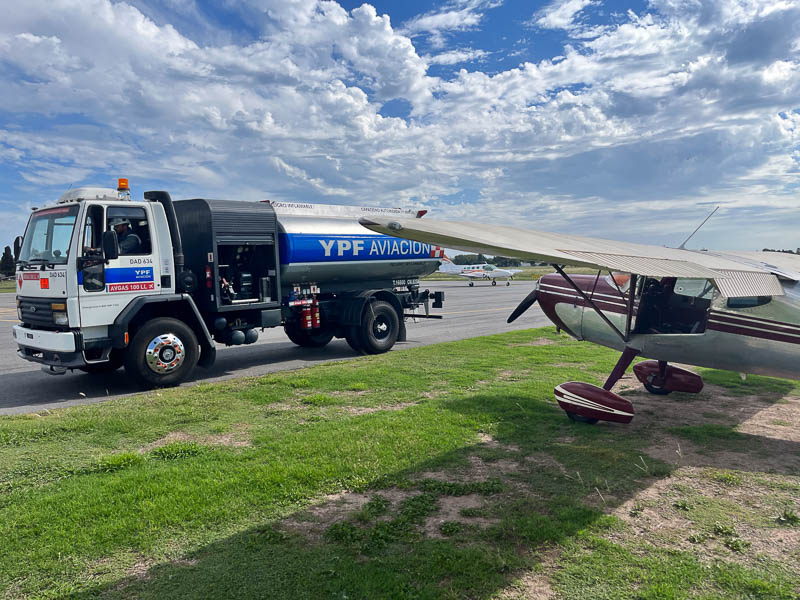
Rosario is a serious airport. A new, larger terminal is being constructed. I put on my yellow vest and make the detour via the marked walkway, worrying about the isolated thunderstorms developing further east.
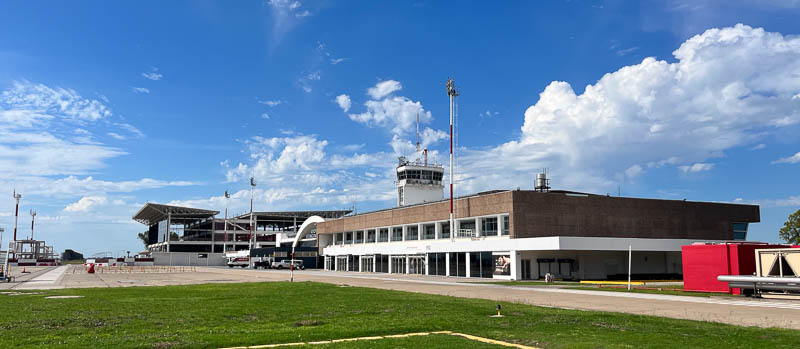
No need to worry. They don’t let me fly to Uruguay today. I should have called immigration in advance, they say. There is a NOTAM which says that I am required to call them 2 hours in advance. Show me, I counter. He can’t. After my experience in Bariloche last year, I had studied the AIP and the NOTAMs carefully and there was no requirement to call them in advance, so I didn’t. Well, if I call them now, how long does it take until they are here? 2 hours. Someone tells me that they are at the airport and only let me wait, but I don’t know if this is true. I couldn’t make it to Carmelo prior to sunset and night VFR is not allowed, so I have no choice but stay in Rosario for the night.
Actually, I stay in a little hotel in Fumes, a village next to Rosario, in walking distance from the airport, so I walk. Feels good, after sitting in aircraft all day. Casually, while walking, I reach out for Lucho. Has he safely returned the Piper to Matanza? No, he writes me. Had to land on a private strip near Rawson, due to engine trouble. Holy cow! LV-MHX had all kind of little issues, but engine problems requiring a landing on a private strip are serious. He tells me all about it and I can feel that it moved him too. An experience, not every pilot wants to make.
March 28th, my last flying day during this South America vacation. I walk the hour back to the airport. Customs and immigration are there on time and the procedure runs smooth. Migraciones charges me 21350 Pesos and I pay with my credit card. Later, I see that the dollar blue rate, the good rate, was used, so it was only 56 Euro. If they would have used the official rate, it would have been over 100 Euro. Just for the privilege of being allowed to leave the country.
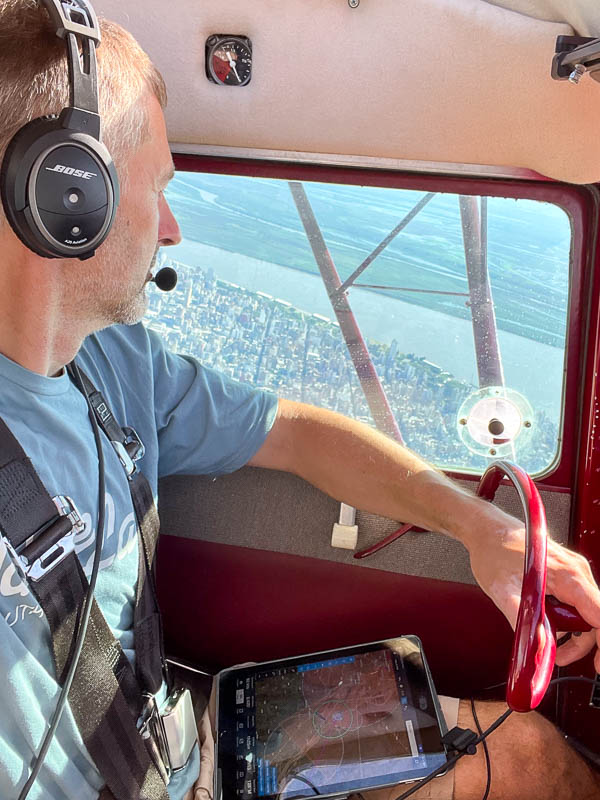
Excellent flying weather today. A right turn after takeoff from Rosario’s runway 02 takes me over the big city. On the other side of the Parana river I see green swamps til the horizon.
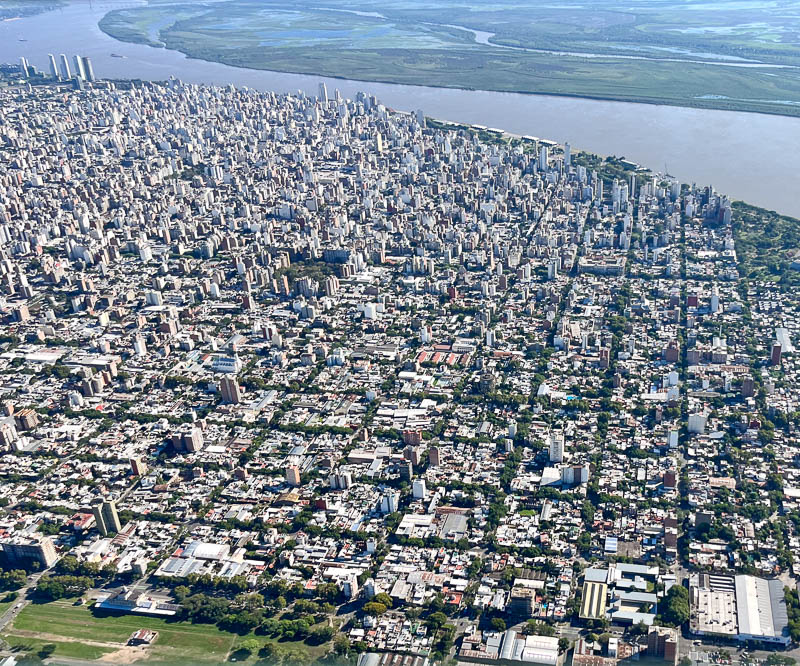
I had filed and are cleared on a direct routing to Carmelo, but when Rosario hands me over to Ezeiza, they ask me to fly via San Pedro (waypoint PEDRO) instead, increasing my flight time by 15 minutes - but I don’t mind the detour, the view is just gorgeous.
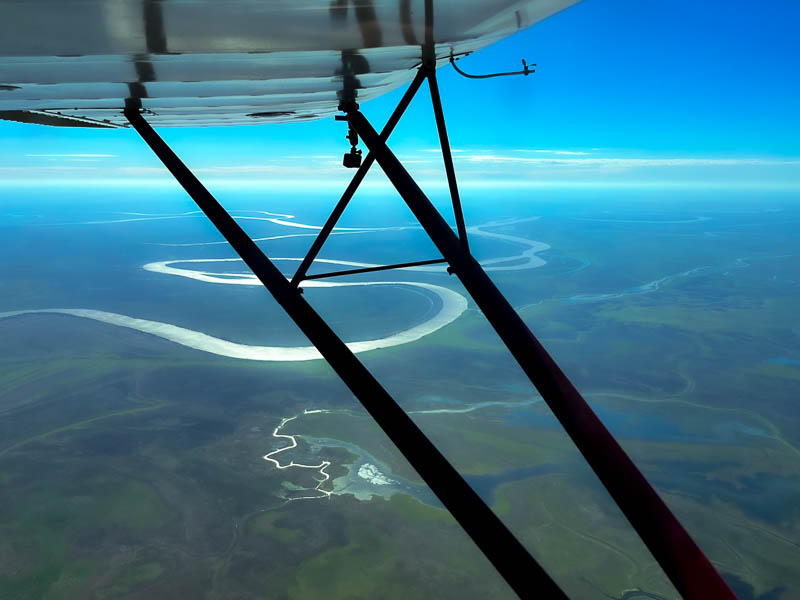
After PEDRO, I am allowed to fly directly to my destination. After overflying the Uruguay River, I look for Carmelo. I look out for a dirt strip, because that is what the satellite picture in Google Maps and Foreflight showed, so I am VERY surprised, when I finally see a brand-new runway below me. Is this really Carmelo? One reason why I chose it was that I was curious how an international airport with a dirt runway would be like. But no, no dirt runway anymore, they paved it. Later I learned, that a private investor recently purchased and modernized the airport, expecting jets from rich folks from Montevideo landing here in a few years. We will see.
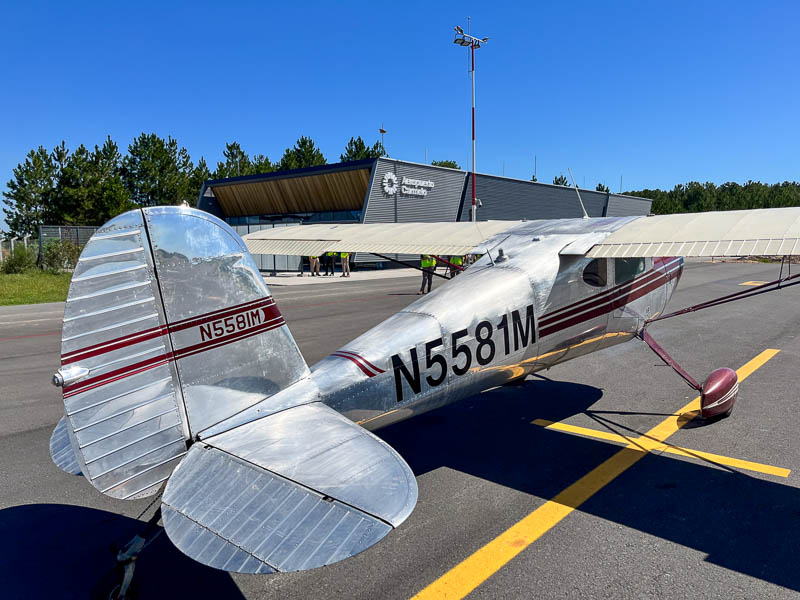
The staff in Carmelo is amazing. Super friendly and efficient. Immigration and customs are done within a few minutes. Not cheaper than Argentina, but rapid and reliable, less bureaucratic. I thank Henry, the contact Heike gave me the other day, for this excellent service.
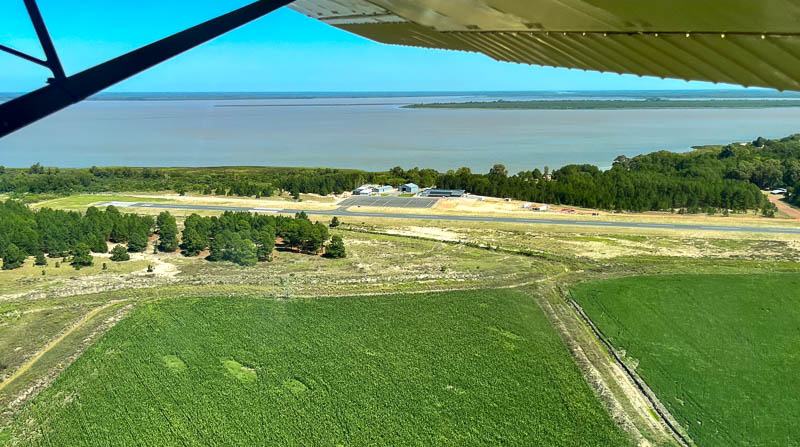
Now, the last flight to Nueva Helvecia. A flight between two uncontrolled airfields. In Argentina, no flight plan would be required, but in Uruguay it is required. Fortunately, filing is easier, no transmission of license, medical and passport, just tapping “file” on Foreflight.
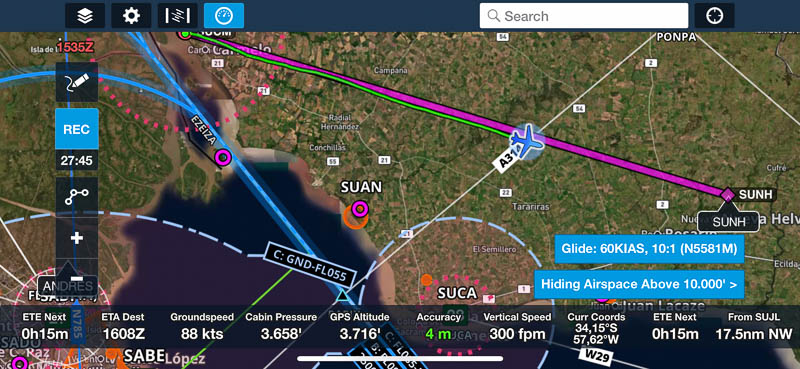
Uruguay flies by below me. I talk a bit with Montevideo, but there is no traffic, I am alone. Finally, Nueva Helvecia appears. I can see the old red Cessna behind the hangar and I feel welcome, it is like coming home.
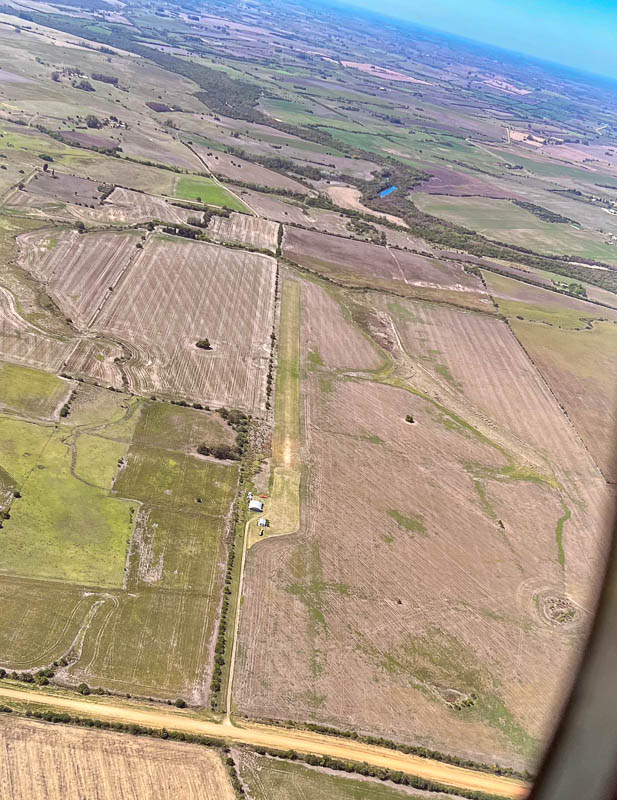
Eugenio and Carlos welcome me, and I invite them both to join me for a few last pattern with N5581M.
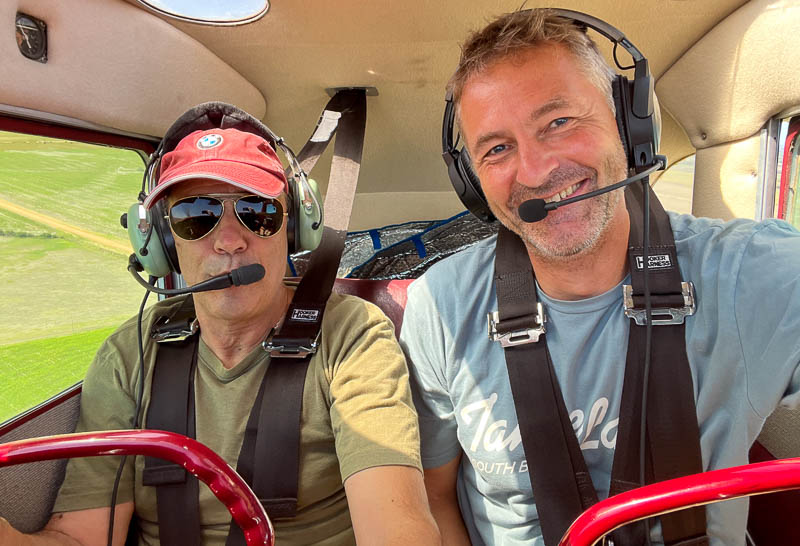
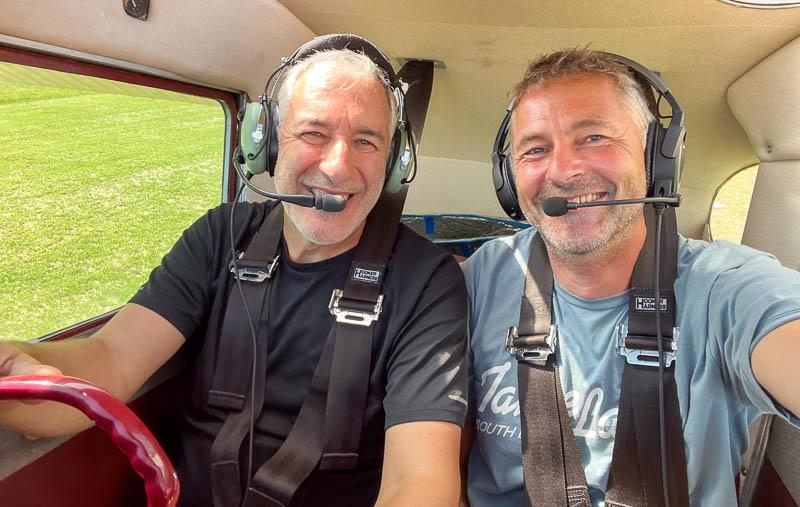
After a quick oil change, we roll her into the aft corner of the hangar, cover and protect her edges. She’s supposed to wait there until next year.
With N5581M taken care of, they invite me on a quick flight with the red club Cessna 172. Three professional pilots with thousands of hours on large transports and lots of bush pilot hours just having some fun. Different from flying in Europe?, Carlos jokes. Oh yes, it is different, and I love it.
